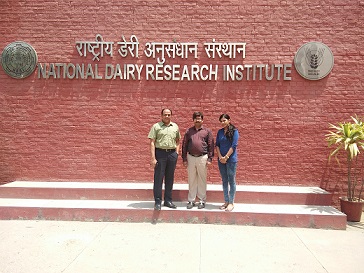Asilent revolution is on in the business of textiles. Fabrics are coming into the market with novel properties that were totally unexpected a few years ago.While some may have anti-bacterial properties, others may give the wearer protection from harmful ultraviolet rays or for that matter be self cleaning. The list is rapidly expanding.
The International Advanced Research Center for Powder Metallurgy and New Materials (ARCI) in Hyderabad is at the forefront of research in this area. It has developed and commercialized nanomaterials that endow fabrics with special properties. Two of its most popular innovations are nano-silver suspension and nano-titanium dioxide material.
The nano-silver suspension, called N9, is being widely used by the textile industry to produce antibacterial fabrics for hospitals, innerwear, sportswear, socks, baby care products and other such use. The nano-titanium dioxide material - also called nano-titania - has high photo-catalytic activity and is used to impart self-cleaning property to the textile and to make them ultraviolet proof.
The technology of two nanomaterials has been transferred to Bangalore-based Resil Chemicals for commercialization. The company has launched garments treated with the nano-silver suspension under the brand name “N9 Pure Silver” and those treated with nano-titania material under the tag names of “Sun Wash” and “Wearable Sun Screen”. Several leading denim brands including Splash, Flying Machine and Colour Plus have adapted this technology.

"We should look for alternate cheaper battery materials. We have all the fabrication technology. We can perhaps make them better. I see a great challenge and requirement to make cost effective batteries,"
ARCI has also undertaken a major task to improve the efficiency and performance of Lithium Ion Battery (LIB) technology for electric vehicles. It is trying to figure out whether it can use its experience and expertise in the areas of nano-material and carbon coating on electrode to achieve this. In addition, it is engaged in looking at the possibility of developing a new range of batteries that performed better than Lithium Ion for electrical vehicles.
We should look for alternate cheaper battery materials. We have all the fabrication technology. We can perhaps make them better. I see a great challenge and requirement to make cost effective batteries, ARCI Director Dr G.Padmanabham said in an interview. As a major research centre in the field of material sciences, ARCI specializes in areas such as solar and automotive energy materials, engineering coatings, ceramic processing, fuel cell technology, and laser processing of materials.
The Institute, among other things, works on a very important and interesting topic: welding."Yes, welding may sound too low end for an institution like us to work on but it is really not so",chuckles Dr Padmanabham.He explains, "One can and must look at welding from a broader sense. It has taken a larger meaning in recent years with the development of various new materials such as ceramics,polymers, and composites. It is true that traditionally welding meant just joining of metal pieces No more".
Even with regard to traditional welding, he says, much remains to be understood and there is a need to have deeper knowledge. "High tech products have no doubt been making their way into the society and the economy. But, traditional ones cannot be wished away. For instance,we cannot do away with trucks and tractors for moving goods and for farming."
Explaining further, he said, "Let us start from the basic, with the rods or sheets that come out of steel plants. They undergo some processing or other, such as casting, rolling or forging and due to that they acquire certain strengths and micro structure characteristics. When we weld two metal pieces, we actually melt the edges and allow them to solidify again. This may result in some inhomogenity at the junctions where the welding has taken place. Also, in the process of fusing and solidifying, atmospheric gases can get inside the welding site. On cooling, the gases can exert pressure leading to cracks. All these can have a significant effect on the overall performance of the welded materials. The problem can be different for different material. For instance, while stainless steel may lose corrosive resistance, structural steel may develop clod cracking at the location of the welding. Scientists have developed lot of understanding on the issue. However, more studies can be done".
Dr Padmanabham is a renowned material engineer. He obtained his Bachelor's degree in mechanical engineering from Andhra University and Master's degree in metallurgy from NIT Warangal. After that he did his Ph.D in welding technology from IIT Delhi. His professional career started in 1987 as a design and development engineer at Bharat Dynamics Limited in Hyderabad where he was involved in indigenistaion of a strategic product.
He joined ARCI, Hyderabad in 2005 and made outstanding research contributions in the fields of Materials joining and Laser Processing of Materials. He was also involved extensively in promoting technology transfer and commercialization. Under his leadership, the Centre for Laser Processing of Materials not only developed as a nationally unique facility but also provided expert help to several other organizations in setting up laser processing facilities. He also provided overall leadership to ceramics processing, sol-gel nano-composite coatings. Dr Padmanabham has more than 80 research publications, and 8 patents to his credit. Apart from this he is a recipient of Materials Research Society of India Medal and German Academic Exchange (DAAD) Fellowship. (India Science Wire)



